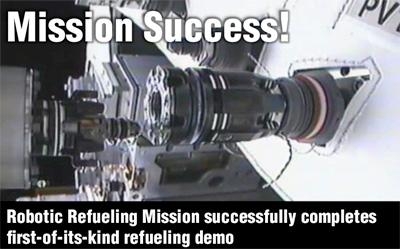Tue, Feb 12, 2013
Advertisement
More News
 NTSB Final Report: Piper PA-44-180
NTSB Final Report: Piper PA-44-180
While On The Base Leg Of The Airport Traffic Pattern The Right Main Landing Gear Did Not Fully Extend Analysis: Both pilots reported that after performing airwork they returned to >[...]
 Classic Aero-TV: The Bizarre Universe of Klyde Morris Cartoons
Classic Aero-TV: The Bizarre Universe of Klyde Morris Cartoons
From 2023 (YouTube Edition): Putting the ANT in Antihero A Beech Starship speeds along at altitude. “Deflectors on!” a voice from within the aircraft cries. “Look>[...]
 ANN's Daily Aero-Term (11.09.25): Minimum Friction Level
ANN's Daily Aero-Term (11.09.25): Minimum Friction Level
Minimum Friction Level The friction level specified in AC 150/5320-12, Measurement, Construction, and Maintenance of Skid Resistant Airport Pavement Surfaces, that represents the m>[...]
 Aero-News: Quote of the Day (11.09.25)
Aero-News: Quote of the Day (11.09.25)
“Beginning this aircraft subsystem testing is the culmination of more than a decade of focused engineering and certification refinements. This is the moment where our intende>[...]
 Classic Aero-TV: Falling for Para-Phernalias Softie Emergency Parachutes
Classic Aero-TV: Falling for Para-Phernalias Softie Emergency Parachutes
From 2023 (YouTube Edition): The Best Option for A Pilots’ Worst Days Since its 1979 founding, Para-Phernalia, Inc. has designed and manufactured the Softie line of pilot eme>[...]
blog comments powered by Disqus




